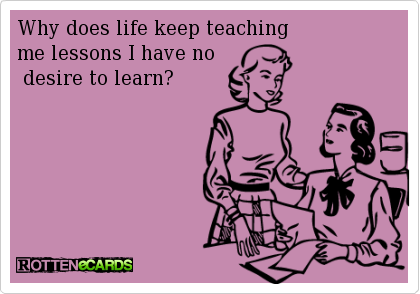HNY Folks!
You know how great minds think alike? Around the time I was toying with the idea of publishing one post related to writing/reading every week, my friend Payal went ahead and built a whole thingie out of it! So I’m colluding with her in the grand 52 Weeks of Reading and Writing challenge! Feel free to join in!
Without further ado, here’s my first post of the series:
In 2013, I wrote and/or revised 12 short stories and essays. I made a total of 48 submissions (primarily short stories, with a few essays thrown in). For your edification, here are a few stats:
Submitted – 48
Accepted – 2 (+1 acceptance received in Jan-14)
Rejected – 31
Waiting on a response – 12 (-1 if I count the ’14 acceptance)
Withdrawn – 3
So my acceptance rate is 2/48 = 4.2% which is lower than the acceptance rate of most literary magazines! I’m not sure if this should thrill me or kill me, but the good thing is that I’m hooked to the ‘Write. Polish. Submit. Repeat’ pattern.
There have been a few lessons learned along the way. This is one of those moments where you go:
But if you’re not learning, you’re dying. Well, at least, decaying/rotting/stagnating etc. So here are a few tips to help increase your chances of publication:
- Know the market you are sending to
Your chances of publication in a magazine of your choice vastly improve if you have read previous issues and can gauge that the tone/style of your piece matches theirs. Most back issues are available online, so there shouldn’t be any excuse for this. If back issues are available only at a price, then for once, splurge. It is a worthy investment. Trade with other writers or chip in to purchase. The time you invest in perusing the archives will be worthwhile.
My new policy is I do not submit to a magazine if I can’t picture my story fitting in. Note that this approach doesn’t guarantee an acceptance, but the probability of the editor liking your story climbs up a few notches.
More than anything else, this lesson carries the most weight.
- Maintain a calendar of upcoming deadlines/themes
Use Duotrope. It requires a paid subscription which I have taken for a few months and found it quite useful. Other free sources of listings include NewPages and The Review Review. I recommend signing up for The Review Review here.
You can use the themes and prompts for later stories if you are unable to submit by the deadline for that particular magazine, if for nothing else but to get the creative juices flowing.
Try Grammarly if you have issues with your grammar.
- Story Length
How long is a piece of string? Short stories lie anywhere between 1001 to 10,000 words. Probably anything longer would be a novella.
If your story is just over a thousand words, I suggest to boost it to 1500 words or more, or chop it to less than 1000 to make it flash.
- Literary value
This is especially a lesson for me. Earlier I tended to write more raw pieces, bereft of depth and beauty. I’ve consciously moved towards slightly more literary writing. Now I’m really immersed in the experience and after a long time, I’m enjoying my writing and am able to write purely for the pleasure of it.
- Critique partners
DO NOT hit submit on a story without getting it critiqued/read/reviewed by at least one other writer. We miss the most obvious and simple things in our story. Note that we would pounce on these mistakes in anyone else’s story without a second thought. Your Internal Editor may be awesome at catching grammatical mistakes, but I find that only a fresh pair of eyes can zero in on flawed plotlines, illogic and fallacies.
For further reading:
Nathaniel Tower, editor of Bartleby Snopes, has just written a great post on when not to submit a story. Check it out.


hey, Gargi thanks for the post and it’s quite a very helpful advice. Last year, applied to three magazines, was rejected by two but accepted by one. It’s very helpful yaar and congrats..I’ll call it an achievement since i won’t call it rejection but learning lessons:)
LikeLike
Thanks, Vishal and congrats on your acceptance. Btw, I too think of them as “Learnings” rather than rejections!
LikeLike
Very informative. Happy New Year to you too.
LikeLike
Thanks, Prats! Glad you found it useful.
LikeLike
Really great tips! Going to tweet this now!
LikeLike
Thanks for the tweet and the mention, Nina! Really appreciate it.
LikeLike
It’s all set to go out tomorrow. I use hoot suite for that!
LikeLike